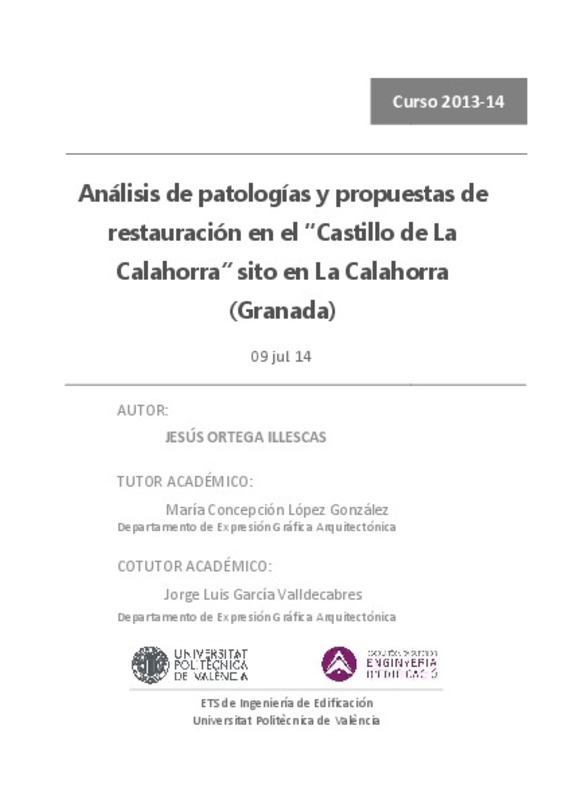JavaScript is disabled for your browser. Some features of this site may not work without it.
Buscar en RiuNet
Listar
Mi cuenta
Estadísticas
Ayuda RiuNet
Admin. UPV
Análisis de patologías y propuestas de restauración en el “Castillo de La Calahorra” sito en La Calahorra (Granada)
Mostrar el registro completo del ítem
Ortega Illescas, J. (2014). Análisis de patologías y propuestas de restauración en el “Castillo de La Calahorra” sito en La Calahorra (Granada). http://hdl.handle.net/10251/45293.
Por favor, use este identificador para citar o enlazar este ítem: http://hdl.handle.net/10251/45293
Ficheros en el ítem
Metadatos del ítem
| Título: | Análisis de patologías y propuestas de restauración en el “Castillo de La Calahorra” sito en La Calahorra (Granada) | |||
| Autor: | Ortega Illescas, Jesús | |||
| Director(es): | ||||
| Entidad UPV: |
|
|||
| Fecha acto/lectura: |
|
|||
| Resumen: |
[ES] En este Trabajo Fin de Grado encontramos en primer lugar la historia de cómo y porqué el Marqués de Zenete en el S. XVI manda construir el Castillo de La Calahorra en este enclave granadino y cómo su gusto por la ...[+]
[EN] The first part of this Bachelor’s Thesis narrates the history of how and why the Marquis de Zenete in the 16th century, ordered the construction of the Castle of La Calahorra in Granada and how his taste for modern ...[+]
|
|||
| Palabras clave: |
|
|||
| Derechos de uso: | Reserva de todos los derechos | |||
| Editorial: |
|
|||
| Titulación: |
|
|||
| Tipo: |
|
recommendations
Este ítem aparece en la(s) siguiente(s) colección(ones)
-
ETSIE - Trabajos académicos [2383]
Escuela Técnica Superior de Ingenieria de Edificación





![ZIP archive [ZIP]](/themes/UPV/images/zip.png)


